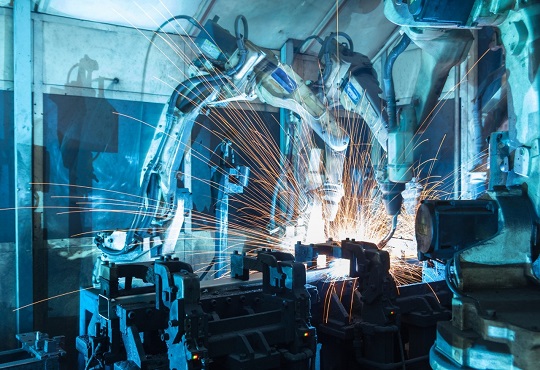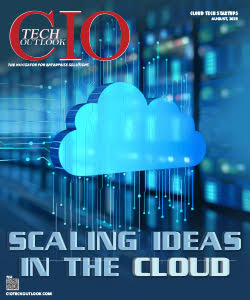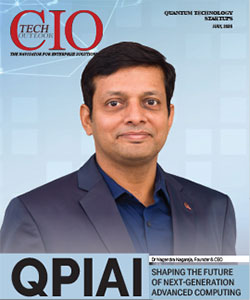Top 5 challenges in smart factory implementation
Janifha Evangeline | Sunday, 13 November 2022, 12:20 IST

The industrial internet of things is becoming highly accessible with the rising proliferation of data, connectivity as well as processing power at the edge. But successful adoption stays out of reach for many, where 2 out of two of every 3 firms manoeuvring smart manufacturing solutions that fail to move into large-scale rollout. Why is it that, regardless of the enthusiasm for this transformation to a digital manufacturing future, a very few firms have recognized its potential at scale?
We already know that Artificial Intelligence and Internet of Things at the edge are some of the keys to the acceleration of factory transformation, but what is needed to catalyze more rapid adoption of these technologies & prevent the pitfalls of pilot installations? Let us look at some of the important challenges and the solutions to address those challenges as well.
Technical skills gap
Thirty-six per cent specify a technical skill gap that stops them from gain from their investment and for successfully implementing new technology & maintain operations, a firm should possess a workforce which has "digital dexterity". The people should understand both the manufacturing processes as well as the digital tools which support those processes.
The solution to addressing this challenge is to building programs which support lifelong learning in the current workforce that combine new concepts with hands-on opportunities to leverage them in the context of manufacturing operations; develop modules which are linked so that employees build & hone their skills over time as they become proficient. Also, render instruction in digital tools & skills, be holistic in the content by using cyber security, infrastructure, Artificial Intelligence, data, storage & compute needs. And lastly, emphasize the problem assessment along with problem solving prior to solution implementation. When starting up a new smart technology project, balance hiring external experts & internal staff to grow your company's digital dexterity.
Data Sensitivity
Twenty-seven per cent state that "data sensitivity" occurs from growing concerns over data as well as IP privacy, ownership & management. In order to successfully use an Artificial Intelligence algorithm, for example, requires that there is data to train it & test it & this means that data should be shared, yet several firms are loathing for sharing their data with 3rd-party solution developers and there is also a strong belief which the present data governance policies for internal use within the firm are insufficient for supporting cross-organizational data sharing.
The solution to this is formalizing data sharing policies for within-organizational data transfer & establishing data governance policies that reflect the value of sharing data with potential risk exposure. Hence, we should try to understand that a one-size-fits-all policy will not be sufficient. Embedding customized policies in the near future supplier/vendor contracts. Considering data sharing needs before standing up a smart project & building in time for negotiating these needs in to project operations.
Interoperability
Twenty-three per cent say that there is a lack of interoperability among components, protocols, products & systems, and this is an ongoing struggle which is not new. However, at present firms are going highly frustrated with their interoperability since it limits their ability for innovating & it also limits their ability for upgrading system components, as it cannot easily "swap out" 1 vendor for another or 1 part of the system for another.
The solution to this challenge is aggressively pursuing & supporting standards development for increasing the interoperability; whenever possible to participate in consortia that include the Open Process Automation Forum. Demand that their vendors work closely together for developing & implementing solutions which stress modularity & it renders paths to upgrades over time by utilising several vendor solutions. Think about open-source options while starting new smart technology projects.
Security
Twenty-two per cent state that security threats exist both in terms of the current as well as the newly advancing vulnerabilities that are present in the emerging vulnerabilities in the factory, when the combination of physical & digital systems in a smart factory which makes real-time interoperability possible. However, when it comes with the risk of an expanded attack surface numerous machines & devices get connected to either a single or multiple networks in the smart factory. Vulnerabilities in any of that equipment can open the system to attack while companies will have to anticipate both enterprise system vulnerabilities & machine level operational vulnerabilities. Firms are not well-prepared to deal with these security threats, and most of them rely on their technology & solution providers to do this.
The solution to this is to combine both OT & IT professionals in smart project teams in order to assess possible vulnerabilities. And secondly, identify people, process, machine, & network threats. Understand the upgrades that vendors introduce into equipment or operations & anticipate possible changes to vulnerabilities. Lastly, develop "corner case" analyses where no one alternative or feature may be a critical vulnerability but where the interdependencies between alternatives or features introduce or increase vulnerabilities.
Handling data growth
As the usage of Artificial Intelligence starts expanding, firms will be faced with more data, that are being generated at a faster pace, - in numerous formats. Artificial Intelligence algorithms should be easier for comprehending that is how does the algorithm arrive at a recommendation? - & these algorithms should be to gather data which is quite often of diverse types & timeframes.
The solution to this is to understand that data which yields business value insights as well as balance computing at the asset level bandwidth; & the need for real-time (low latency) control feedback. Secondly, anticipate sampling rates which reflect changes to machine/operational status, although gathering everything may not make sense. And lastly, develop a robust system architecture prior to implementation which balances compute requirements & the location of those needs, and lastly the storage requirements today & into the future, as well as communications infrastructure.


.jpg)

